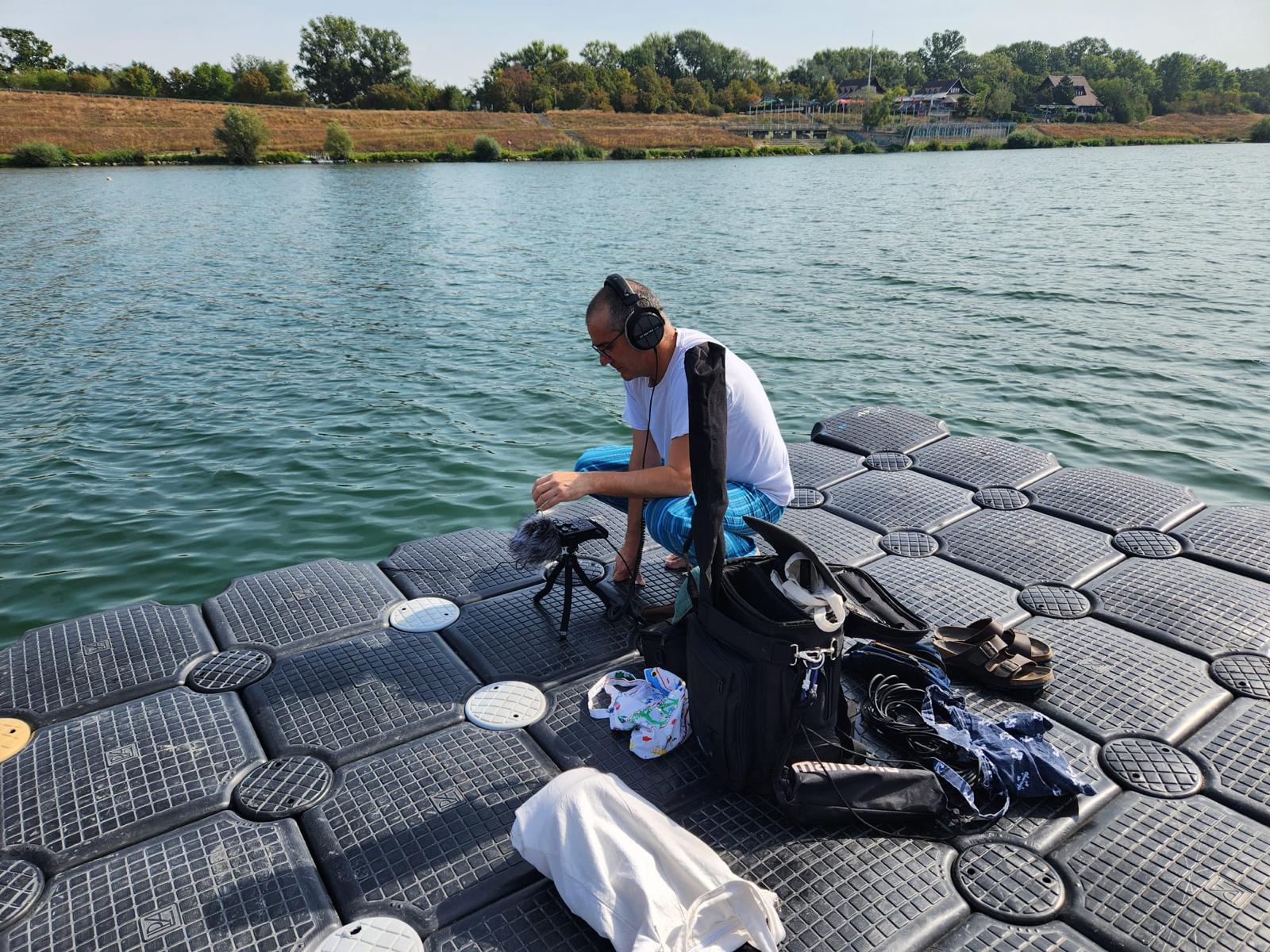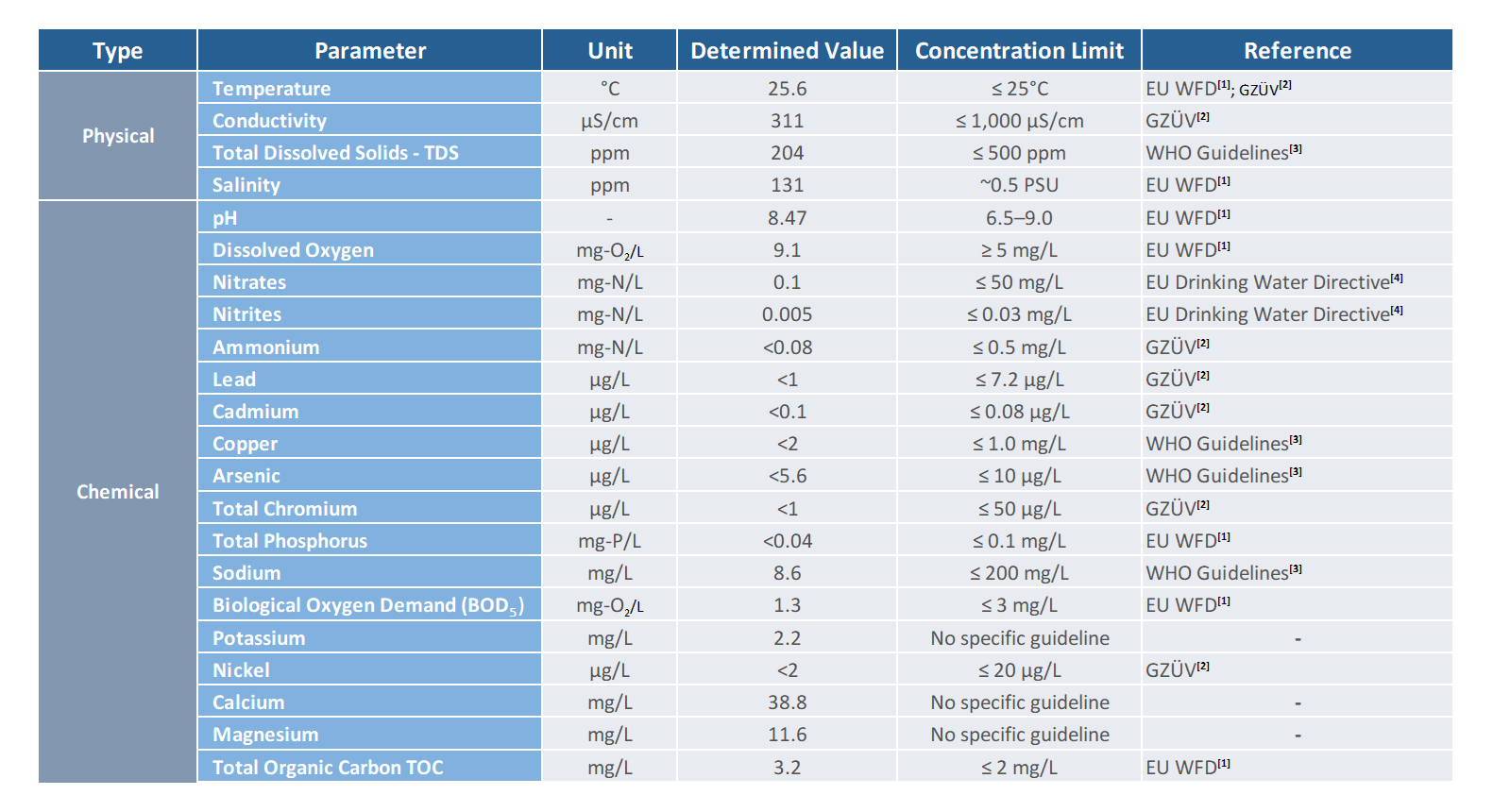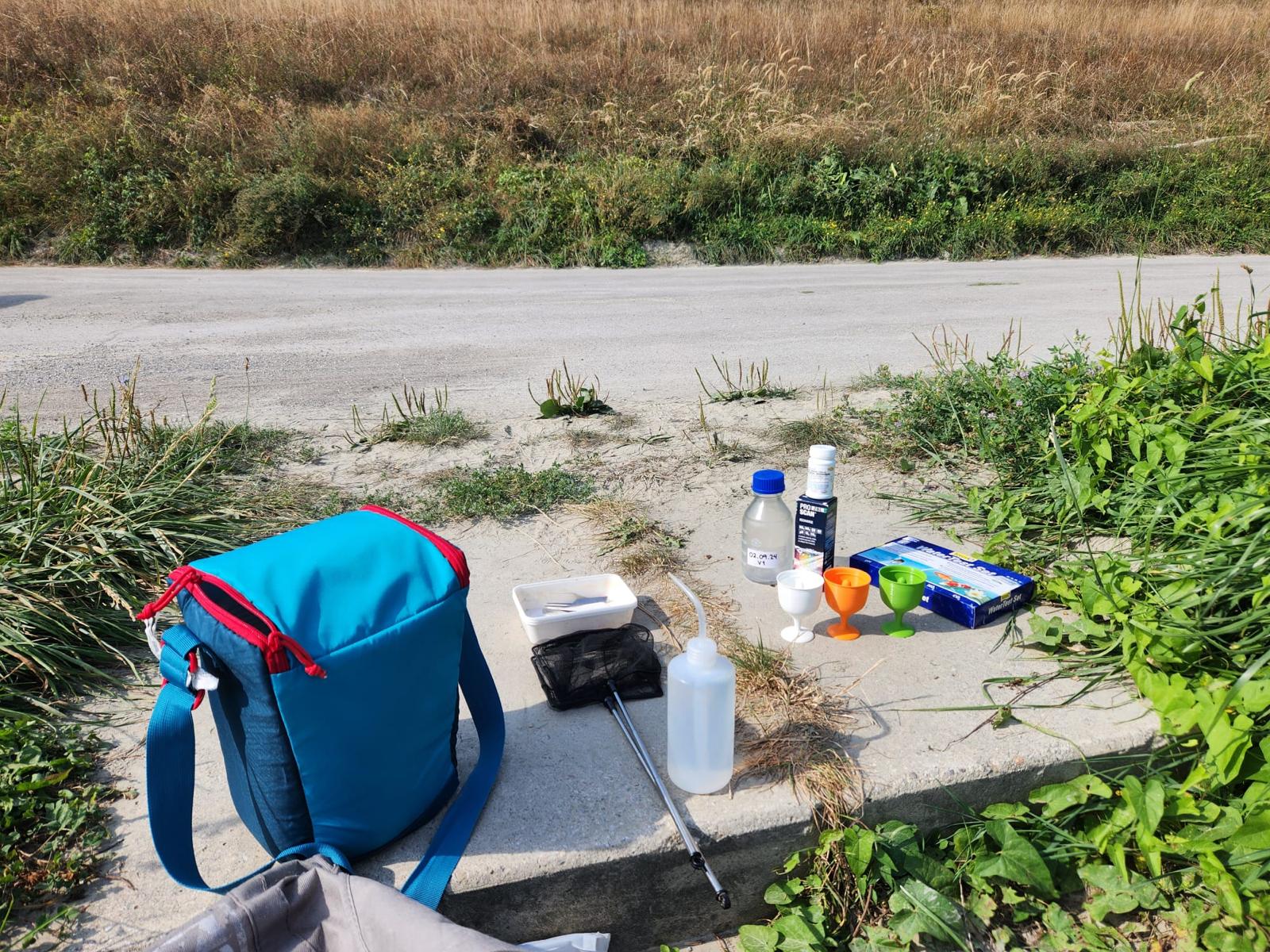Sound and Water Analysis
Donauinsel, Vienna, Austria

Sound Analysis
Date: 02.09.2024
Time: 11.00 am
Atmospheric Conditions
A sunny and calm day with minimal wind, creating excellent conditions for outdoor exploration and relaxation.
Location
Situated near a pedestrian and traffic bridge, the site lies at a river bend, offering a unique blend of urban and natural elements with picturesque views of the flowing water.
Ambient Sounds
The soundscape is peaceful, with mid-range frequencies and low noise pollution. Bicycles passing near the river and occasional paddlers contribute subtle rhythmic sounds, while the absence of nearby traffic and birds ensures tranquility.
Underwater Sounds
Underwater, the continuous flow of water dominates, creating a steady and serene soundscape. No aquatic life sounds were detected, emphasizing the river’s quiet, unbroken rhythm.
Observations
The river bend location fosters a calm sound environment, though the absence of animals both above and below the water is notable. The difference in sound speed between surface and underwater is evident, especially with the early arrival of rower oar sounds beneath the surface.

Water Analysis

The results of the analysis of the Danube River water quality parameters in sampling Donauinsel – V1 show that the water meets the required quality standards for several key indicators. However, there are also instances where these limits are exceeded.
For the parameters that meet the limits, the determined values are within acceptable ranges. Conductivity, TDS, and salinity indicate minimal mineralization, while the pH is well-balanced (8.47). Dissolved oxygen levels (9.1 mg/L) support aquatic life, and nitrogen compounds like nitrates, nitrites, and ammonium are far below thresholds, showing no risk of eutrophication. Heavy metals, including lead, cadmium, copper, arsenic, and chromium, are at negligible levels, indicating low contamination. Nutrients like phosphorus and sodium are within safe ranges, and the low BOD5 (1.3 mg/L) suggests minimal organic pollution. Other key elements, such as calcium, magnesium, potassium, nickel, and TOC, also comply with regulatory standards.
However, there are some exceedances in the water quality parameters. The temperature (25.6°C) exceeds the limit of 25°C, which may affect the metabolic rates of aquatic organisms, potentially stressing aquatic life. Additionally, total organic carbon (TOC), with a value of 3.2 mg/L, exceeds the recommended limit of 2 mg/L, suggesting higher levels of organic material, which could lead to oxygen depletion if left unchecked. Although TOC was recorded within the normal range in other instances, this value reflects some organic contamination that needs further investigation.
Note: The concentration limits used in the analysis are based on regulatory standards for surface water and drinking water quality, as outlined in the EU Water Framework Directive (EU WFD) and the EU Drinking Water Directive. These limits ensure aquatic ecosystem health and public safety. The Österreichisches Bundeskanzleramt (2024) provides specific limits for surface water bodies in Austria, while the EU directives offer broader standards for surface and drinking water across Europe. Both sources were used to ensure comprehensive comparison and accuracy of the values analyzed.

References:
[1] European Commission. (2018). Directive 2000/60/EC of the European Parliament and of the Council establishing a framework for community action in the field of water policy (Water Framework Directive). Official Journal of the European Union, L 327/1. https://eur-lex.europa.eu
[2] Österreichisches Bundeskanzleramt. (2024). Gewässerzustandsüberwachungsverordnung (GZÜV), BGBl. II Nr. 96/2006. Retrieved from https://www.ris.bka.gv.at/eli/bgbl/II/2006/96
[3] World Health Organization (WHO). (2017). Guidelines for drinking-water quality: Fourth edition incorporating the first addendum. WHO. https://www.who.int/water_sanitation_health/publications/dwq-guidelines-4th/en/
[4] European Union. (1998). Directive 98/83/EC on the quality of water intended for human consumption. Official Journal of the European Union, L 330, 32-54. https://eur-lex.europa.eu/legal-content/EN/TXT/?uri=CELEX%3A31998L0083
